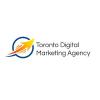Unlocking the Power of SaaS Digital Marketing: Strategies for Growth and Success

In today’s fast-paced digital world, Software as a Service (SaaS) companies are flourishing like never before. These businesses rely on an online presence, often as their primary source of customer acquisition, engagement, and growth. That’s where digital marketing comes in, offering SaaS brands a way to grow quickly, reach targeted audiences, and scale efficiently. If you’re new to SaaS marketing or looking to refine your strategy, this guide will help you navigate the unique digital marketing landscape that SaaS brands face.
What Is SaaS Digital Marketing?
SaaS digital marketing encompasses a variety of strategies designed to promote software services. Unlike other industries, where products are usually physical or one-time purchases, SaaS products are digital and often subscription-based. This means the marketing approach needs to not only acquire users but also nurture them throughout their journey to ensure retention and growth.
Key SaaS digital marketing goals often include:
- Lead Generation: Attracting potential customers to learn more about the software.
- Conversion Optimization: Turning visitors and free-trial users into paying customers.
- Customer Retention: Encouraging long-term engagement with the software to reduce churn.
- Upselling & Cross-selling: Increasing the lifetime value (LTV) of customers by encouraging higher-tier subscriptions or complementary products.
Let’s dive into some practical strategies that can help SaaS companies achieve these goals and sustain a thriving customer base.
1. Create Valuable Content That Solves Problems
Why it Works: Content marketing is one of the most powerful tools in a SaaS marketer’s toolbox. By providing insightful and practical information, you position your brand as a thought leader, building trust and credibility among potential users.
Types of Effective Content for SaaS:
- Blog Posts & Articles: Write about industry trends, challenges, and solutions your software can provide. For instance, if your SaaS offers project management tools, publish articles on "Productivity Tips for Remote Teams" or "How to Improve Team Collaboration."
- Case Studies: Showcase real-life success stories of clients who achieved tangible results using your software. This helps potential customers visualize their own success.
- White Papers and E-books: Long-form content allows you to dive deep into topics and offers readers added value in exchange for their contact information, helping with lead generation.
- Webinars and Video Tutorials: Host webinars or create video content that educates users about specific features of your SaaS product, demonstrating value upfront.
2. Optimize Your Website for Conversions
Why it Works: A SaaS website often acts as the primary storefront for users. Every click, scroll, and interaction on your site can either move users closer to becoming customers or discourage them from signing up.
Key Areas to Focus on for Conversion Optimization:
- Clear Calls to Action (CTAs): Every page should have a specific purpose. Whether it’s signing up for a free trial, downloading a resource, or watching a demo, a clear CTA keeps users focused.
- Easy Navigation: Make your site intuitive to navigate, with clearly labeled tabs for each section, such as Product, Features, Pricing, and Resources.
- Landing Pages: Tailor landing pages for specific marketing campaigns. For instance, if you’re running an ad on “collaboration tools for remote teams,” make sure the landing page highlights that benefit.
- Speed & Mobile Friendliness: Users are less likely to engage with your website if it’s slow or not optimized for mobile. Use tools like Google’s PageSpeed Insights to evaluate and improve site performance.
3. Leverage SEO to Boost Organic Reach
Why it Works: For SaaS companies, SEO is a cost-effective way to reach potential customers who are already searching for solutions to their pain points. With the right approach, SEO can become a steady, long-term source of qualified traffic.
Essential SEO Strategies for SaaS:
- Keyword Research: Focus on keywords relevant to your product’s benefits and features. For instance, a cloud storage SaaS might target keywords like "secure file storage for business" or "team collaboration software."
- Optimize for User Intent: Users are typically searching for solutions to specific problems. Make sure your content is optimized to answer those questions and address pain points effectively.
- Build Backlinks: Increase your website’s authority by gaining backlinks from credible sites. This can be achieved through guest posting, partnerships, and creating content others want to link to.
- Technical SEO: Use sitemaps, make sure your site is crawlable, and regularly check for broken links. These aspects make it easier for search engines to understand and rank your content.
4. Invest in Paid Advertising Wisely
Why it Works: While organic marketing is essential, paid advertising lets you reach your audience faster, especially when launching a new feature or targeting competitive keywords. When used strategically, PPC (Pay-Per-Click) ads can supplement organic efforts and help fill the gaps in customer acquisition.
Effective Paid Advertising Channels:
- Google Ads: Ideal for targeting users who are actively searching for solutions. Bidding on high-intent keywords can result in highly qualified traffic.
- Social Media Ads: Platforms like LinkedIn, Facebook, and Twitter offer robust ad tools that help you reach a targeted audience. For example, if your SaaS focuses on CRM tools, LinkedIn ads might work well, as the platform attracts a business-focused audience.
- Retargeting Ads: Retargeting allows you to display ads to users who have already visited your website, encouraging them to return and sign up for a trial.
5. Use Email Marketing to Nurture Leads and Retain Customers
Why it Works: Email marketing allows you to reach potential and current customers directly, guiding them along the journey from lead to loyal user. For SaaS businesses, email marketing is crucial for onboarding, educating, and engaging customers over time.
Key Types of SaaS Email Campaigns:
- Onboarding Sequences: Create a welcome series for new users to help them understand and make the most of your product.
- Feature Updates: Regularly inform your users about new features and improvements. This helps increase engagement and reduces the chances of churn.
- Upsell & Cross-Sell Campaigns: Target users who are ready for more advanced features or add-ons, encouraging them to upgrade their plans.
- Re-engagement Emails: If users haven’t logged in for a while, a friendly reminder with a helpful resource can bring them back.
6. Harness the Power of Social Proof
Why it Works: Social proof, like reviews, testimonials, and user-generated content, is one of the most persuasive marketing tools. SaaS customers, especially, want to know that your product can deliver results for businesses like theirs.
Examples of Effective Social Proof:
- Customer Testimonials: Place these on high-traffic pages, such as your homepage or pricing page, to reinforce credibility.
- Case Studies: Share success stories from clients who have seen real results using your software.
- Reviews on Third-party Platforms: Encourage satisfied customers to leave reviews on sites like G2, Capterra, or Trustpilot. Positive reviews increase trust and help potential users in their decision-making process.
7. Measure and Refine Your Strategy
Why it Works: Data-driven marketing is vital for SaaS companies. By measuring the effectiveness of different strategies, you can identify what works, double down on successful campaigns, and make data-informed decisions.
Important Metrics to Track:
- Customer Acquisition Cost (CAC): How much it costs to acquire each new customer. Keeping this cost low while increasing conversions is key to profitability.
- Customer Lifetime Value (CLTV): The total revenue a single customer brings over their entire engagement with your product. Focusing on increasing this metric can have a big impact on overall revenue.
- Churn Rate: Track the percentage of customers who stop using your service. A high churn rate indicates dissatisfaction and highlights areas for improvement.
- Monthly Recurring Revenue (MRR): MRR is a critical metric for SaaS companies, indicating predictable revenue streams and growth trends.
Conclusion
Marketing a SaaS product isn’t a one-size-fits-all endeavor. By leveraging a mix of organic and paid strategies, optimizing for conversions, focusing on retention, and constantly measuring results, you can create a sustainable growth engine for your SaaS business. Each of these strategies is a puzzle piece in a larger picture, and when combined thoughtfully, they empower SaaS brands to grow effectively, engage their customers, and thrive in a competitive market.
Remember, the key to SaaS digital marketing success lies in consistent testing, adapting to new insights, and always putting the customer experience at the heart of your efforts. With this approach, your SaaS company will be well on its way to standing out in a bustling digital landscape. Happy marketing!
Post Your Ad Here


Comments